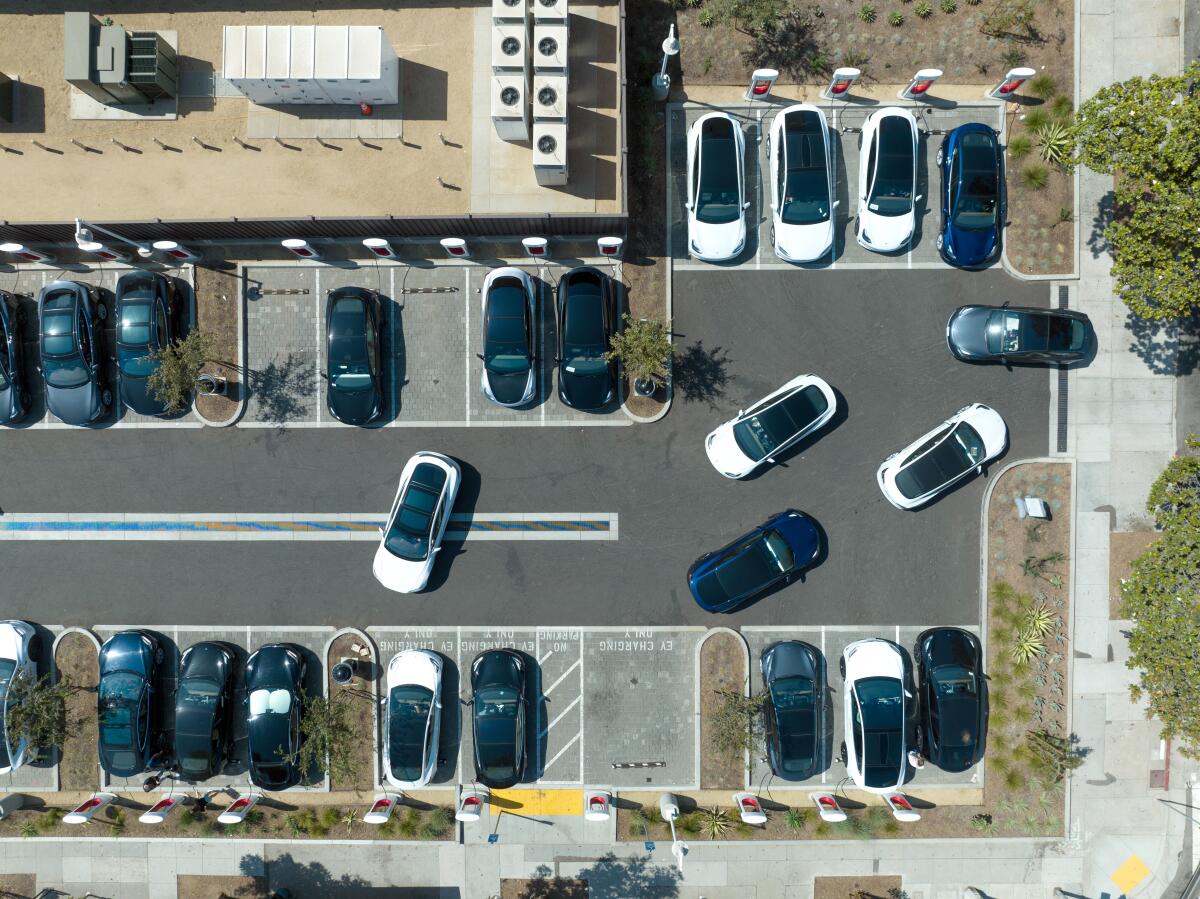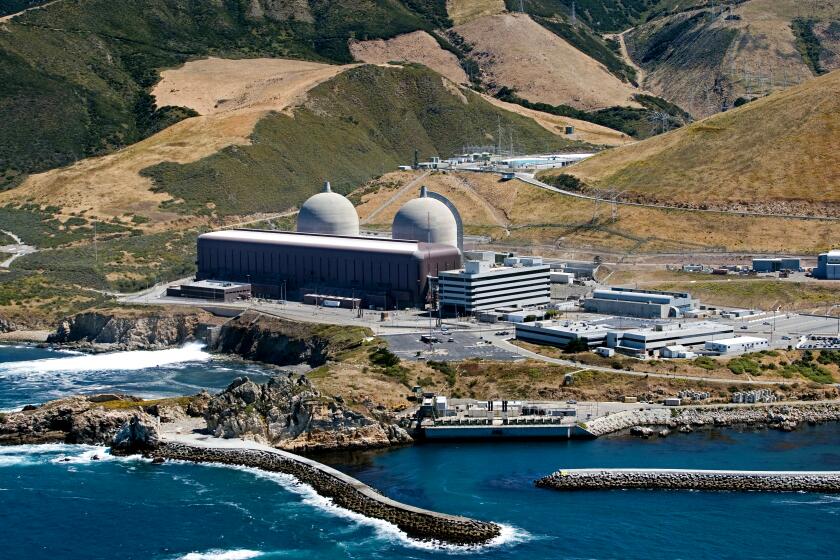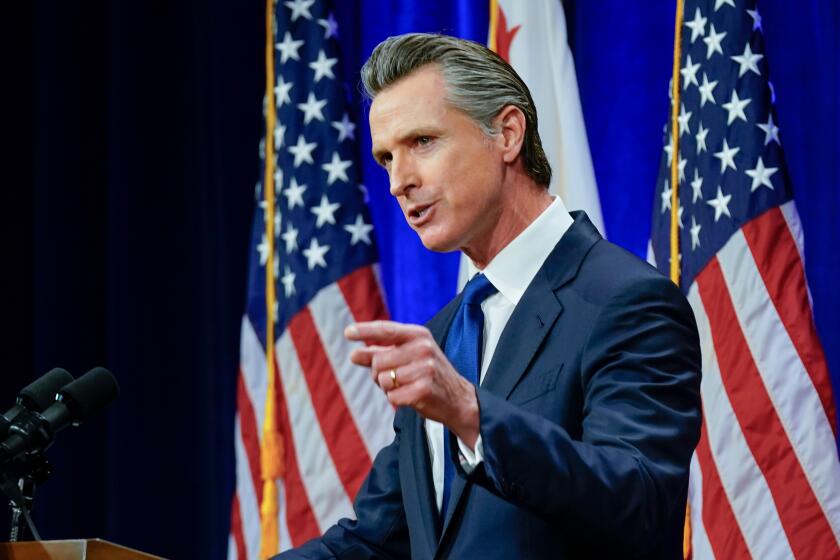Editorial: Yes! California just banned the sale of new gas cars. This is a big deal

It’s hard to overstate the significance of California’s move this week to end the sale of new gas-powered cars.
The California Air Resources Board’s vote Thursday setting a firm 2035 deadline is huge and consequential for climate change, air quality and health. The nation’s most populated and worst-polluted state is the first to adopt rules that will finally stop adding gas-fueled passenger vehicles to its roads.
The end of the internal combustion engine era, and the toll on our lungs and our planet, is finally on the horizon.
This regulation will require automakers to sell increasing percentages of zero-emission and plug-in hybrid vehicles starting with 35% of new car sales in 2026, reaching 68% in 2030 and 100% by 2035. Zero-emission vehicles account for 16.5% of California’s new sales today, a rate that leads the nation but lags behind Europe and China. So these rules help reestablish California’s climate leadership, putting it in step with other leading nations and making it one of the first — and the largest — vehicle markets in the world to require 100% of new sales be zero emissions.
It’s a pivotal moment for a state that has been shaped for decades, often negatively, by automobiles and the health-damaging pollution they generate.
A counterproposal to spend $1.4 billion on renewable energy should be pursued whether Gov. Newsom’s plan to keep Diablo Canyon running past 2025 moves forward or not.
Set in motion by an executive order Gov. Gavin Newsom signed on the hood of an electric car two years ago, these standards are probably the most transformative action ever taken by the powerful regulatory agency that traces its origins back to Arie Jan Haagen-Smit’s 1950s discovery that automobiles were the culprit behind Los Angeles’ thick, lung-searing smog. California established the nation’s first tailpipe emissions standard in 1966, and for more than 50 years regulators have worked to continually tighten them, saving innumerable lives through dramatically cleaner air.
Despite decades of progress, California still suffers the nation’s worst smog, and we need to stop burning fossil fuels now to reduce the health damage and prevent the effects of climate change from getting disastrously worse. So this action is above all else a necessity.
Phasing out gas-powered cars is expected to slash planet-warming and smog-forming emissions over the next two decades, prevent more than 1,200 early deaths from air pollution and offer the greatest health benefits to people living near freeways and other transportation hubs, including low-income communities of color. The plan will bring economic benefits in the form of green jobs and savings to consumers, who will pay thousands of dollars less on operation, maintenance and repairs for zero-emission cars compared with the costs of internal combustion models.
The plan also includes requirements on minimum vehicle range, charging and battery durability, which will help protect buyers’ investments. And it will have wide-reaching effects, since it is expected to be adopted by several other states that follow California’s emissions standards.
California lawmakers should work with Gov. Gavin Newsom on his five-point plan to strengthen the state’s climate targets, even though it’s a last-minute effort.
This action also comes at an opportune moment for the auto industry, as many carmakers have already concluded that zero-emission vehicles are the future. Consumer adoption is also approaching a crucial tipping point. State regulators predict electric vehicles will cost about the same as gas-fueled models by 2030, if not sooner. It’s notable that this transition is not being forced on an unwilling industry. Some automakers like Toyota, which only a few years ago joined with the Trump administration in challenging California’s authority to regulate vehicle pollution, have recently changed their stance and say they are now on board with the state’s efforts to slash greenhouse gas emissions.
While the vote to ban the sales of gas cars is a remarkable step, it is not aggressive enough to match the grave and growing climate crisis, and will not reduce vehicle pollution quickly enough for California to meet its target of cutting greenhouse gas emissions to 40% below 1990 levels by 2030. And its environmental justice provisions offering manufacturer incentives to make electric cars more affordable for lower-income Californians would be stronger if they were mandatory. Regulators should revisit and strengthen these rules in the future.
There are bound to be legal and political challenges and other bumps on the road to phase out gas-powered cars, and California has a lot of work ahead to make electric vehicles affordable and build out charging stations.
But first, let’s celebrate this moment in history, when the state that pioneered car culture veered onto a new path that leaves fossil-fueled cars in the dust.
More to Read
A cure for the common opinion
Get thought-provoking perspectives with our weekly newsletter.
You may occasionally receive promotional content from the Los Angeles Times.












